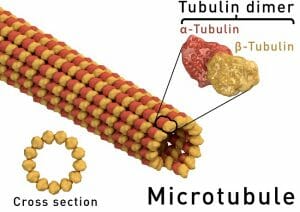Telophase Definition
Telophase is the final stage in cell division. During telophase, the nuclear envelopes reform around the new nuclei in each half of the dividing cell. The nucleolus, or ribosome producing portions of the nucleus return. As the cell has finished moving the chromosomes, the main parts of the spindle apparatus fall depolymerize, or fall apart. As telophase moves towards completion, the chromosomes release from their tightly bound structure back into loose chromatin. Telophase is ended by a process known as cytokinesis, which cleaves the cell into two new cells.
Telophase begins as anaphase ends. During anaphase, the chromosomes or chromatids on the metaphase plate are separated, and dragged towards opposite poles. When the chromosomes reach the pole for which they are intended, telophase can begin. In order to allow the new cells to begin producing the necessary proteins and to protect the DNA, a nucleus must reform in each cell. The process for how this happens is still in theory. One theory suggests that the pieces of the nuclear envelope reform like monomers of a larger polymer that must be activated to form. In this theory, each vesicle of broken down nuclear membrane receives a signal to connect to the other vesicles. The other theory suggests that the endoplasmic reticulum, with the old nuclear membrane processed within it, fold around the bundled chromosomes. Either way, the nuclear envelope is reformed around each nucleus.
Once this nuclear envelope is reformed, the chromosomes in the nucleus can begin to unwind back into chromatin and the nucleolus can reform. The nucleolus is a dense complex of enzymes, RNA, and DNA, which creates ribosomes. Ribosomes are the small protein structures that create many types of protein. Once this complex is reformed in the new nuclei during telophase, the cells (still attached) can begin producing proteins from the newly synthesized genetic code. The final step in telophase is for the complex array of microtubules to degrade.
Microtubules are formed from two different subunits, α-tubulin and β-tubulin, as seen in the picture below. These monomers combine together to create tubulin dimers. The dimers combine together to form much larger tubes, which form the structure of most cellular forms. During telophase, cellular signals are given out which tell certain spindle microtubules to disassociate from each other. The dimers break apart, and the entire structure falls to pieces. Other microtubules, which will function during cytokinesis, stay intact.
Telophase in Mitosis
Telophase is the final stage of mitosis. The sister chromosomes, once sister chromatids, have now been segregated to the far poles of the cell. The mitotic spindle is no longer necessary because the chromosomes completed their journey. The tubulin dimers fall apart, and much of the microtubule network is disassembled. The remainder of the microtubules will function in cytokinesis, which will fully separate the two cells.
During mitosis, each duplicated chromosome is evenly divided. Thus, during telophase two identical nuclei are created. These cells will function in the same way, and can be used to build entire organisms from a single zygote, or replace cells which have been damaged. Meiosis, on the other hand, produces cells that differ in the genetics they carry.
Telophase in Meiosis
Telophase I
Meiosis contains two divisions, both of which contain a telophase stage. During telophase I, the homologous chromosomes get segregated into separate nuclei. Although another division must take place for meiosis to be complete, the cells must still reform the nuclear envelopes, disassemble the spindle fiber microtubules, and go through cytokinesis. The cells then enter a short resting stage, known as interkinesis.
Telophase II
During the subsequent cell division, the sister chromatids of each chromosome are separated. During telophase II, the sister chromosomes are surrounded by new nuclear membranes. Although the two cells created during telophase II come from the same chromosome that has been duplicated, variation can be introduced in the process of recombination, in which parts of homologous chromosomes were exchanged in prophase I. Between the four cells produced at the end of meiosis, the two alleles for each gene can be segregated in many different ways, in combination with alleles for many other genes.
Related Biology Terms
- Cytokinesis – The final process that concludes cell division, separate from telophase.
- Telomere – The repeating ends of DNA strands, which help protect the DNA when it is moved around.
- Anaphase – The stage preceding telophase, in which the chromosomes are segregated.
- Dimer – A molecule composed of two subunits, which can connect and disconnect upon certain cell signals.
Quiz
1. A single eukaryotic cell that can reproduce asexually was placed in a petri dish. I reproduced three times through mitosis and started replicating again. All the cells get suspended in telophase on the fourth division. How many cells are present?
A. 4
B. 8
C. 16
2. In some fungi, the nuclear envelope never degrades during mitosis. The spindle fibers form inside, or through, the nuclear envelope. Does telophase occur in these eukaryotes?
A. Yes
B. No
C. Only if the fibers form through the nuclear membrane
3. How does the new nuclear membrane form?
A. The small vesicles from the previous membrane reconnect.
B. The endoplasmic reticulum absorbs the vesicles and creates a new nuclear envelope.
C. We aren’t sure.

